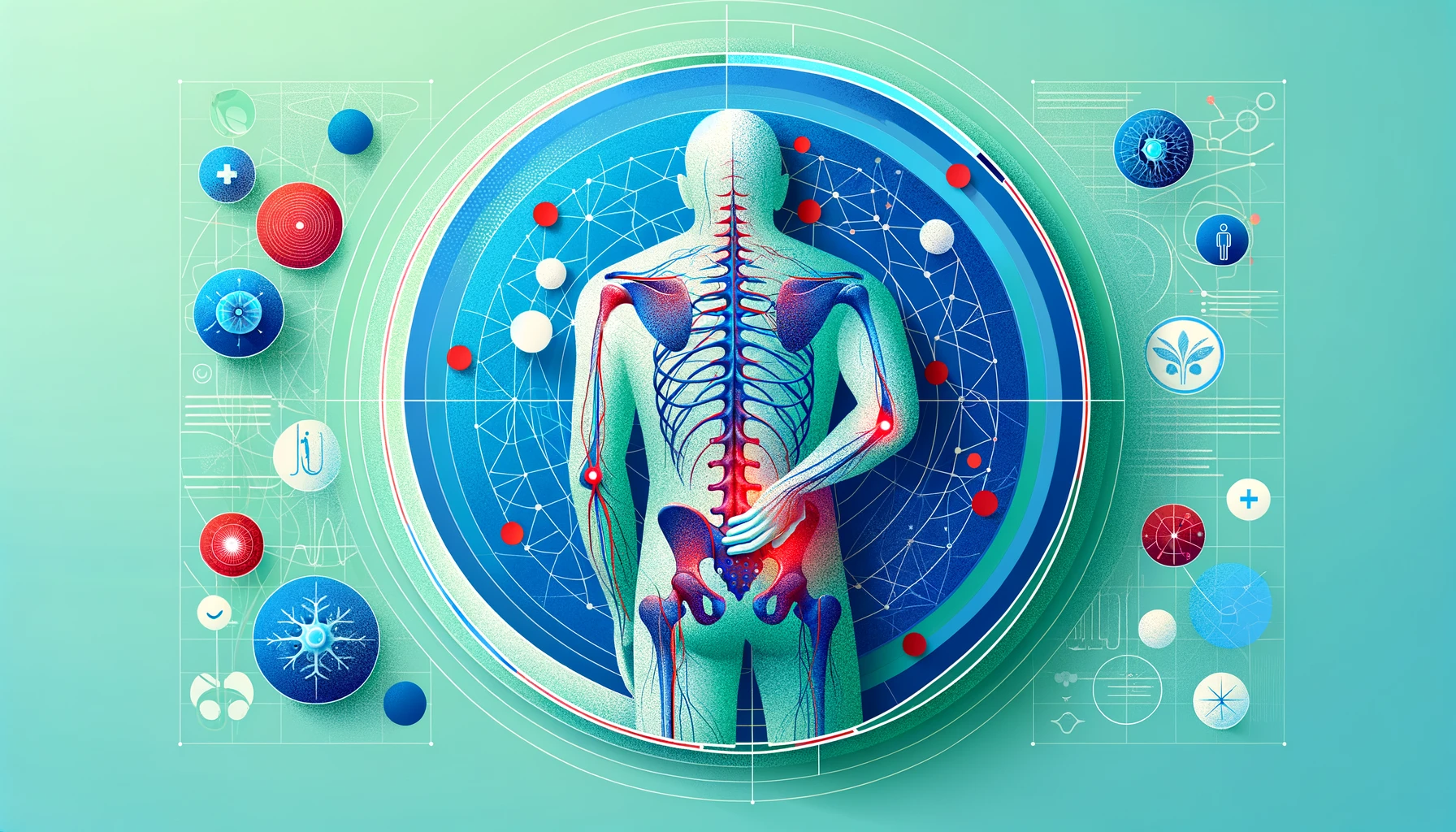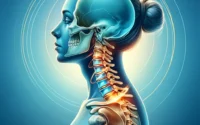How Sciatic Nerve Becomes Painful?
Last Updated on February 8, 2024 by Lily

Key Takeaways
1. Sciatica, stemming from the compression or irritation of the sciatic nerve, presents as pain, numbness, or tingling along the nerve’s pathway.
2. Mechanical compression, chemical inflammation, and muscle tightness are common culprits behind sciatic nerve pain.
3. Diagnosis involves a thorough medical history, physical examination, and often imaging studies to pinpoint the underlying cause.
4. Treatment ranges from conservative measures like rest and physical therapy to interventional procedures and surgery for severe cases, emphasizing a multidisciplinary approach for effective management.
The sciatic nerve, despite its robust structure, can become susceptible to pain under various circumstances. Understanding the mechanisms behind sciatic nerve pain is crucial for effective management.
Mechanical Compression
Mechanical compression occurs when structures such as herniated discs, bone spurs, or spinal misalignments put pressure on the sciatic nerve roots. This pressure can lead to irritation, inflammation, and pain along the nerve’s pathway.
Chemical Inflammation
Chemical inflammation occurs when tissues surrounding the sciatic nerve release inflammatory substances in response to injury or irritation. These substances, such as cytokines and prostaglandins, can sensitise the nerve fibers, amplifying pain signals and contributing to sciatica symptoms.
Muscle Tightness and Spasms
Tightness or spasms in muscles adjacent to the sciatic nerve can exacerbate nerve compression and pain. Muscles such as the piriformis, located deep within the buttock, can compress the sciatic nerve if they become tight or inflamed—a condition known as piriformis syndrome.
Diagnosis of Sciatica
Diagnosing sciatica typically involves a comprehensive assessment of the patient’s medical history, a physical examination, and diagnostic imaging studies.
Medical History
Healthcare providers inquire about the onset, duration, and characteristics of the pain, as well as any aggravating or alleviating factors. They also assess for red flags such as bowel or bladder dysfunction, which may indicate more severe underlying conditions requiring immediate attention.
Physical Examination
During the physical examination, healthcare providers evaluate the patient’s range of motion, muscle strength, reflexes, and sensory function. Specific tests, such as the straight leg raise test or the slump test, may be performed to elicit symptoms characteristic of sciatica.
Imaging Studies
Imaging tests such as X-rays, magnetic resonance imaging (MRI), or computed tomography (CT) scans may be ordered to visualize the spine and identify structural abnormalities contributing to sciatic nerve compression. These tests help confirm the diagnosis and guide treatment decisions.
Treatment Options for Sciatica
The management of sciatica typically involves a combination of conservative treatments, interventional procedures, and surgical interventions, depending on the severity and underlying cause of the condition.
Conservative Treatments
Conservative treatments aim to alleviate pain, reduce inflammation, and improve functional status without the need for invasive procedures. Common conservative measures include:
- Rest: Short-term rest may be recommended to relieve acute symptoms, but prolonged bed rest is generally discouraged as it can lead to muscle stiffness and deconditioning.
- Heat and Cold Therapy: Applying heat packs or ice packs to the affected area can help reduce pain and inflammation, providing temporary relief from sciatica symptoms.
- Medications: Over-the-counter pain relievers such as acetaminophen or nonsteroidal anti-inflammatory drugs (NSAIDs) may be used to manage mild to moderate pain associated with sciatica. In some cases, muscle relaxants or oral steroids may be prescribed to alleviate muscle spasms and reduce inflammation.
- Physical Therapy: Physical therapy aims to improve strength, flexibility, and posture, thereby reducing pressure on the sciatic nerve and promoting healing. Therapeutic exercises, stretching techniques, manual therapy, and modalities such as ultrasound or electrical stimulation may be incorporated into the treatment plan.
Interventional Procedures
Interventional procedures are minimally invasive techniques that target specific structures or pathways involved in sciatic nerve pain. These procedures are often performed under fluoroscopic guidance and may include:
- Epidural Steroid Injections: Epidural steroid injections deliver corticosteroid medication directly into the epidural space surrounding the spinal nerves. This medication helps reduce inflammation and alleviate pain, providing temporary relief from sciatica symptoms.
- Nerve Block Injections: Nerve block injections involve the administration of local anesthetic agents or corticosteroids to specific nerves responsible for transmitting pain signals. By blocking these nerves’ activity, nerve block injections can effectively relieve pain and improve functional status in patients with sciatica.
- Facet Joint Injections: Facet joint injections target the small joints located between adjacent vertebrae in the spine. These injections deliver corticosteroids or numbing medications to the facet joints, reducing inflammation and alleviating pain associated with facet joint arthritis or degeneration.
Surgical Interventions
Surgical interventions for sciatica are typically reserved for cases of severe or progressive symptoms that do not respond to conservative treatments. Surgical options may include:
- Discectomy: Discectomy involves the surgical removal of all or part of a herniated disc pressing on the sciatic nerve. This procedure aims to decompress the nerve and relieve associated symptoms, such as pain, numbness, or weakness.
- Laminectomy: Laminectomy, also known as spinal decompression surgery, involves removing a portion of the lamina (the bony arch of the vertebra) to create more space within the spinal canal. This procedure can relieve pressure on the spinal cord or nerve roots, alleviating symptoms of sciatica.
- Spinal Fusion: Spinal fusion surgery aims to stabilize the spine by fusing two or more adjacent vertebrae together using bone grafts, screws, or metal rods. This procedure is often recommended for conditions such as spondylolisthesis or severe degenerative disc disease contributing to sciatic nerve compression.
Prevention and Management Strategies for Sciatica
Preventing sciatica and managing its symptoms require a multifaceted approach that addresses underlying risk factors, promotes spinal health, and encourages lifestyle modifications.
Maintain Good Posture and Body Mechanics
Practicing proper posture and body mechanics can help reduce strain on the spine and minimize the risk of developing sciatica. Tips for maintaining good posture include:
- Sit and Stand Tall: Keep your back straight, shoulders relaxed, and head aligned with your spine while sitting or standing.
- Use Ergonomic Furniture: Use chairs, desks, and other ergonomic furniture that support proper spinal alignment and provide adequate lumbar support.
- Avoid Prolonged Sitting or Standing: Take frequent breaks to stretch and change positions, especially if you have a sedentary job or lifestyle.
Engage in Regular Exercise and Physical Activity
Regular exercise and physical activity are essential for maintaining spinal health, improving muscle strength and flexibility, and reducing the risk of sciatica. Incorporate the following types of exercises into your routine:
- Core Strengthening Exercises: Strengthening the muscles of the abdomen, lower back, and pelvis can provide better support for the spine and reduce pressure on the sciatic nerve. Examples of core exercises include planks, bridges, and bird-dogs.
- Stretching Exercises: Stretching exercises can help improve flexibility, reduce muscle tightness, and alleviate sciatica symptoms. Focus on stretching the hamstrings, piriformis, and other muscles that may contribute to sciatic nerve compression.
- Low-Impact Aerobic Activities: Engage in low-impact aerobic activities such as walking, swimming, or cycling to promote circulation, maintain cardiovascular health, and support overall spinal health.
Practice Proper Body Mechanics
Practicing proper body mechanics during daily activities can help prevent injuries and reduce the risk of aggravating sciatica symptoms. Follow these tips for lifting, bending, and carrying objects:
- Use Proper Lifting Techniques: Bend your knees, keep your back straight, and lift with your legs when lifting heavy objects. Avoid twisting your spine while lifting and carrying objects.
- Avoid Prolonged Sitting or Standing: Alternate between sitting, standing, and walking throughout the day to prevent stiffness and reduce pressure on the spine and sciatic nerve.
- Use Assistive Devices: Use assistive devices such as supportive footwear, lumbar cushions, or ergonomic tools to reduce strain on the spine and minimize the risk of sciatica-related symptoms.
Maintain a Healthy Weight
Maintaining a healthy weight through a balanced diet and regular exercise is essential for preventing excess strain on the spine and reducing the risk of sciatica. Aim to achieve and maintain a body mass index (BMI) within the healthy range for your height and build.
- Eat a Balanced Diet: Consume a balanced diet rich in fruits, vegetables, lean proteins, and whole grains to support overall health and maintain a healthy weight. Limit your intake of processed foods, sugary snacks, and unhealthy fats.
- Stay Hydrated: Drink an adequate amount of water throughout the day to keep your body hydrated and support optimal spinal health. Dehydration can lead to muscle cramps, stiffness, and reduced spinal flexibility, increasing the risk of sciatica-related symptoms.
Manage Stress and Mental Health
Stress and mental health can influence pain perception and exacerbate sciatica symptoms. Practice stress management techniques such as deep breathing exercises, meditation, yoga, or mindfulness to promote relaxation, reduce muscle tension, and alleviate sciatic nerve pain.
- Practice Relaxation Techniques: Incorporate relaxation techniques such as deep breathing exercises, progressive muscle relaxation, or guided imagery into your daily routine to reduce stress levels and promote relaxation.
- Seek Social Support: Reach out to friends, family members, or support groups for emotional support and encouragement. Sharing your experiences and feelings with others can help alleviate stress and improve your overall well-being.
Conclusion
Sciatica is a common and often debilitating condition characterized by pain, numbness, or tingling sensations that radiate along the path of the sciatic nerve. Understanding the causes, symptoms, diagnosis, treatment options, and prevention strategies for sciatica is essential for effectively managing this condition and improving quality of life. By adopting a multidisciplinary approach that addresses underlying risk factors, promotes spinal health, and encourages lifestyle modifications, individuals can reduce the risk of sciatica-related symptoms and maintain optimal spinal function and mobility.



